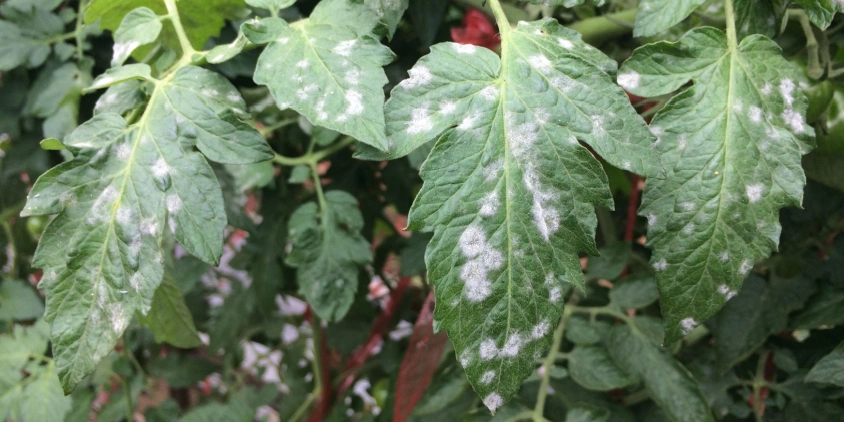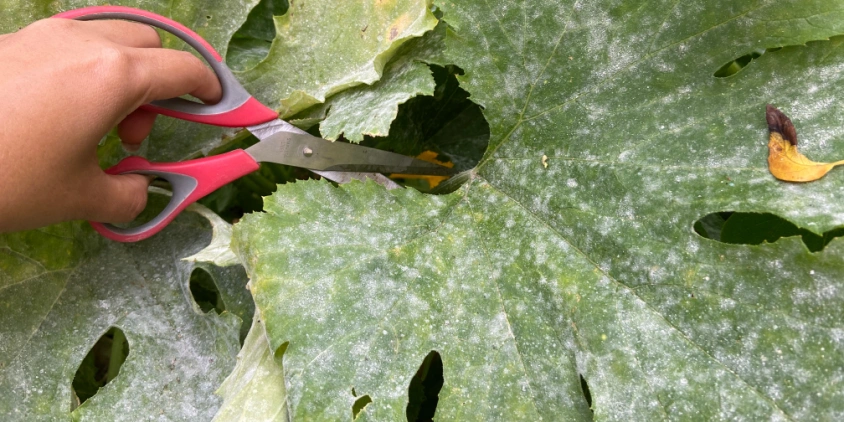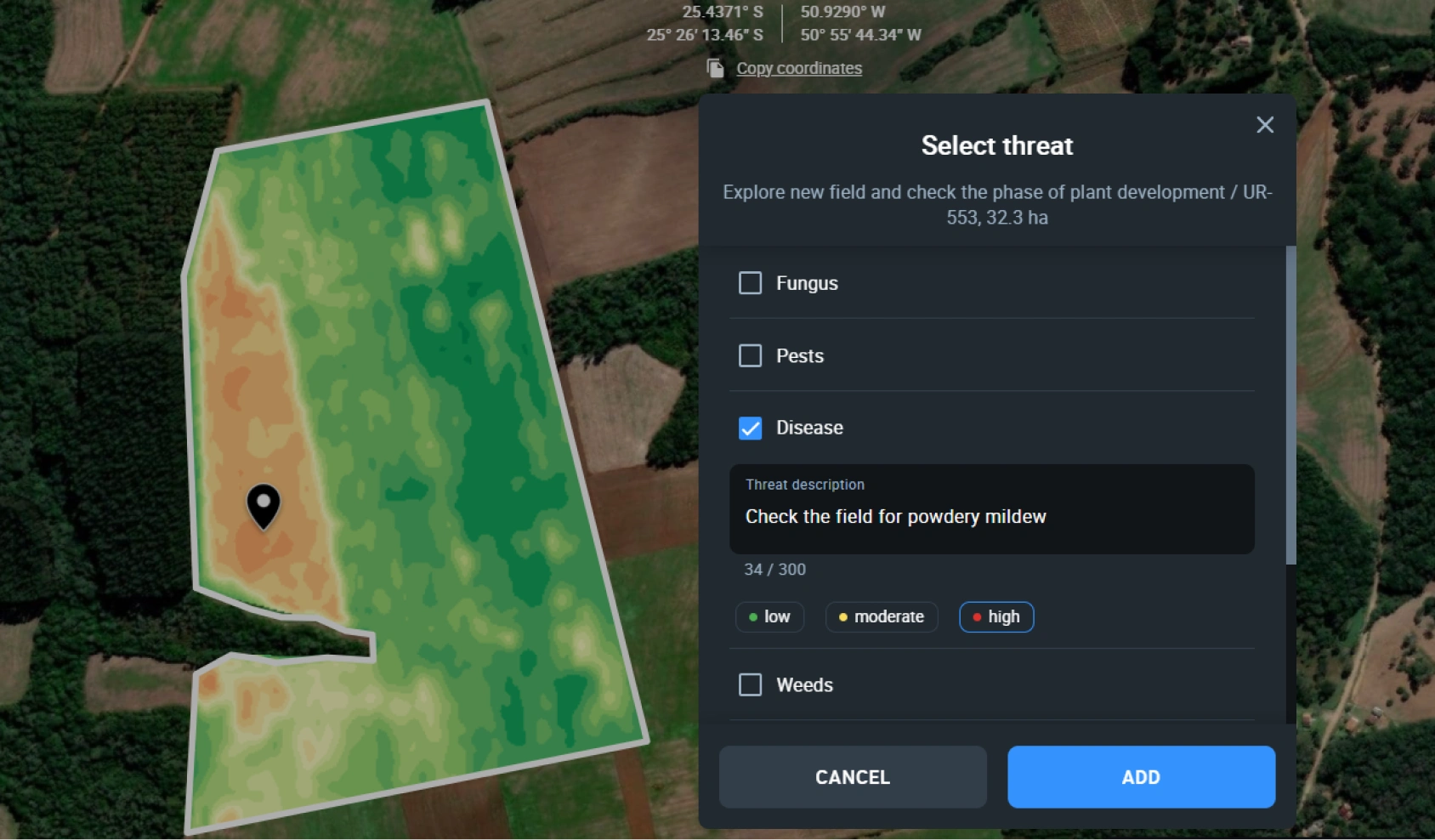
Powdery Mildew: Effective Prevention And Treatment
Powdery mildew is among the most prevalent crop diseases worldwide. It is especially problematic for barley producers since it can result in severe economic losses due to yield decline and a decrease in grain quality. Although a fungus, this tricky disease can live in environments that would kill most other fungi. Therefore, effective management of powdery mildew on plants relies on early diagnosis and an integrated approach that includes cultural, biological, and chemical control. To help you keep powdery mildew fungus at bay, we will review the most effective methods and technologies for controlling the disease.
What Is Powdery Mildew?
Powdery mildew is a host-specific fungal disease of global occurrence. It is easily recognized by a powdery formation on plants. The disease can affect virtually all kinds of plants, including grasses, fruits, vines, vegetables, and grain crops.
Although downy mildew feeds on diseased plants and looks like a fungus, it is actually an obligatory parasite. In contrast to powdery mildew, it prefers damp, chilly places .
What Causes Powdery Mildew On Plants?
Pathogens that cause powdery mildew vary for different plant species. Some of the most prevalent fungal races responsible for this crop disease are Erysiphe, Leveillula, and Sphaerotheca.
| Causal organism | Host plants |
|---|---|
| Erysiphe graminis | Barley, millet, sorghum, wheat, oats, rye, other grasses and cereals |
| Erysiphe cichoracearum | Cucumbers, endive, lettuce, melons, potato, pumpkin, squash |
| Erysiphe cruciferarum | Broccoli, Brussels sprouts, cauliflower and other cole crops, radicchio, radishes, turnips |
| Erysiphe lycopersici | Tomatoes |
| Erysiphe pisi | Peas |
| Erysiphe heraclei | Carrots, parsley, parsnips |
| Erysiphe polygoni | Beets |
| Leveillula taurica | Artichoke, eggplant, peppers, tomatillo, tomatoes |
| Sphaerotheca fuliginea | Beans, black-eyed peas, cucurbits, okra |
How Does Powdery Mildew Spread?
As the fungus colonizes your crops, it will cover the tops of the leaves with a layer of mildew consisting of numerous spores. Mycelium, the threadlike structure that powdery mildew forms, never goes inside the plant tissues; instead, it stays on the surface. In their quest for nutrition, fungi reach plant epidermal (outermost layer) cells through haustoria, which resemble root structures.
Fungus, in the form of mycelium and cleistothecia (fruiting bodies), overwinters on winter crops, weeds, and crop residue. As the weather warms up in the spring, cleistothecia release spores into the air. The wind, insects, or splashing raindrops carry these spores, which then infect susceptible neighboring plants. Spores from adjacent winter crops can harm spring crops, but wheat and barley aren’t in danger from one another.
Spores of powdery mildew can overwinter in soil and other organic materials like mulch and compost.

Conditions Influencing The Development Of Powdery Mildew Disease
Unlike most fungal and bacterial diseases, powdery mildew does well in warm and dry conditions, without freestanding moisture on the leaves. However, the fungus can only propagate in humid environments. Ideal conditions for powdery mildew are found in shaded or dimly lit areas with temperatures between 68 and 86°F (20 and 30°C) and relative humidity levels above 95%. Factors beyond weather that impact the progression of the disease include the variety, age, and condition of the host plant.
When leaf temperatures exceed 90°F (32°C), spores and mycelial colonies might die off.
Visual Signs And Symptoms Of Powdery Mildew
The early signs usually show up on the upper sides of the leaves, but they can start on the lower ones as well. What does powdery mildew look like? Be on the lookout for purple or reddish blotches, uneven patches, chlorotic spots, and necrotic lesions. A white or gray powdery mold, indicative of the fungus, might later form on diseased plant tissue. Although the fungi can invade mature tissues, they mostly target young shoots, leaves, and flowers.
Early wilting, browning, and falling of diseased leaves are possible. Atypical scab-like sores, leaf rolling, curled or twisted shoots, and stunted plant development are among the other powdery mildew symptoms. In severe cases of disease, plants can perish; however, this is extremely rare.
White powdery mildew is easy to diagnose, but if plants aren’t checked often, symptoms that appear on lower or middle leaves could go unnoticed. Delays in detecting the disease likely account for the dramatic increase in sick leaf percentages, which can jump from 10% to 70% in as little as a week.

How To Prevent Powdery Mildew
The best way to protect your crops from the negative effects of powdery mildew is to prevent it from spreading in your fields. The most common ways to accomplish this are:
- Make powdery mildew resistant plant varieties your first choice for planting.
- Treat the seeds or apply foliar active in-furrow fungicides, particularly to protect barley plants younger than eight weeks.
- Keep plants at a reasonable distance from one another and nearby structures, and thin down the stands so air may circulate freely. Ensure that plants receive enough sunlight and warmth to avoid excessive humidity.
- As soon as you notice any infected or dead leaves, remove them.
- Be cautious not to over-fertilize, since this can make the plant more susceptible to disease.
- Regularly apply organic sulfur-based fungicides, which are useful for both preventing and treating powdery mildew.
How To Control Powdery Mildew
While the bulk of powdery mildew solutions are meant to prevent the disease, there are numerous options for dealing with an existing infestation. To get the most out of the remedy, you might need to apply it several times. Evaluate the results after about a month of weekly applications, and repeat if needed.
Chemical Control Of Powdery Mildew
The most common means for powdery mildew control are fungicides applied repeatedly, including the following ones:
- Potassium bicarbonate quickly destroys the powdery mildew spores. When applied generously to diseased leaves at a rate of 1.6 oz/gal (10 g/l), this contact fungicide — which is also used in organic farming — has the potential to reduce pathogen sporulation by up to 80%.
- Sulfur fungicides for controlling powdery mildew, in the form of powder or spray, proved to be highly effective in interrupting the fungus’s growth. However, applying powdery mildew sulfur treatment in heat or in conjunction with some oils can harm plants.
- Triazoles are systemic fungicides that are soaked up by plants, thus providing a long-term protective effect. They stop fungi from growing by preventing the production of sterols.
- Copper fungicides effectively control powdery mildew. At the same time, it’s necessary to be careful with fungicide dosage and avoid misuse since copper can build up in the soil and become toxic for plants.
- Hydrogen peroxide is thought to be a safer alternative to some synthetic fungicides. Once you notice powdery mildew, sprinkle a 3% hydrogen peroxide solution on both sides of the leaves; repeat once a week if necessary.
Cultural Powdery Mildew Treatment
Аdhering to the following cultural practices can prevent or restrain the development of the disease:
- Cutting off any infected plant parts — leaves, stalks, buds, and others — prevents the disease from spreading. Trimming some perennials to the ground is an option. Dispose of all the removed plant parts instead of composting them, because powdery mildew spores can survive in compost. Sanitize the pruners and other instruments used to trim and prune diseased plants.
- Spraying the leaves with water first thing in the morning to wash away fungal spores is a good way to prevent or at least slow the spread of the disease. Doing this in the morning gives the foliage time to dry out, reducing the risk of other crop diseases caused by excess moisture.

Natural Powdery Mildew Treatment
There are quite a few natural remedies for powdery mildew. Some of them include:
- Neem oil is debatable as a standalone treatment for powdery mildew in plants; however, adding it to mixes can increase their effectiveness.
- Sodium bicarbonate, or baking soda, applied liberally may be more effective as a preventative strategy, but it also reduces the spread of the present pathogen.
- Milk has a dual purpose: fighting the disease and boosting the plant’s immunity. This is particularly true when growing watermelon and other melon family species.
Integrated Pest Management (IPM) Against Powdery Mildew
Integrated pest management refers to a set of farming practices aimed at improving crop health. Since IPM is not a single technique but rather a blend of various techniques, with a preference for sustainable methods whenever possible, it employs some of the methods listed above. Methods of integrated pest management against powdery mildew on crops include the following:
- early morning leaf spraying;
- periodic canopy pruning;
- using neem oil or a spray of potassium bicarbonate every two weeks;
- trimming unhealthy plant parts;
- employing natural enemies like the Ampelomyces quisquali fungus, which parasitizes the mildew-causing Erysiphe fungus. For instance, it might be used on grapes before and after harvest to combat the pathogenic fungus in its dormant state .
EOSDA Crop Monitoring
Fields analytics tool with access to high-resolution satellite images for remote problem areas identification!
EOSDA Crop Monitoring Solutions To Help Prevent And Get Rid Of Powdery Mildew
Сrop monitoring technologies using remote sensing empowers farmers to keep tabs on abiotic factors that promote disease growth, the infestation process, and the effects of prevention and treatment. With EOSDA Crop Monitoring, you can efficiently monitor field conditions, anticipate upcoming changes, and strategically manage agricultural operations, including proactive measures to safeguard crops from diseases.
Assessing The Disease Risk
The Disease risk feature in EOSDA Crop Monitoring allows farmers to effortlessly track the risk of the onset of common crop diseases such as powdery mildew. By combining accurate weather forecasts with data on the present stage of crop growth, we can determine which days have a low, medium, or high probability of disease development. If the risk is medium to high, monitor the crops more carefully and consider conducting additional scouting to evaluate the conditions on the site.

Comprehensive View Via The Field Activity Log
Agricultural cooperatives can use our farm management platform to efficiently plan and administer agricultural activities on their members’ fields. The Field activity log is the place where all cultural practices for controlling powdery mildew in each and every field can be overseen. Simply choose the type of activity, set a schedule, assign a person in charge, and keep tabs on how things are going.
The infestation in one field puts the crops in adjacent fields in danger. The Field activity log enables you to track multiple fields from one interface, which is highly beneficial for preventing the spread of disease.

Scouting For Early Disease Detection
Scouting entails conducting regular surveys of the fields to detect any abnormalities in the crop state and development aimed at avoiding or lessening the impact of crop diseases. If remote monitoring suggests the emergence of powdery mildew or any other disease, you can save the crop by scouting potentially infected areas right away. Regular field scouting can also help ascertain whether the IPM activities are effective.
With the Scouting tool provided by EOSDA Crop Monitoring, you can easily do the following:
- effectively spot crop problems;
- set scouting assignments based on GPS coordinates for targeted areas;
- assign tasks to any team member;
- receive detailed reports complete with attached photos of the area checked.
Our Scouting feature is intuitive and user-friendly: with just a few clicks, you can assign tasks and then access all reports on the platform for analysis and decision-making.

Path To Disease-Free Crops
Although some crop species are more prone to powdery mildew than others, the disease can harm nearly all crops. If the fungus is a persistent problem for you, opt for more disease-resistant varieties. To further secure your crops, don’t overlook regular remote monitoring and scouting. Our solutions will be there for you every step of the way to healthy crops.
About the author:
Vasyl Cherlinka is a Doctor of Biosciences specializing in pedology (soil science), with 30 years of experience in the field. He attended the engineering college in Ukraine and received his degree in agrochemistry, agronomy and soil science in the Chernivtsi National University. Since 2018, Dr. Cherlinka has been advising EOSDA on problems in soil science, agronomy, and agrochemistry.
Recent articles

Transition Guide From Sentinel Hub EO Browser To EOSDA LandViewer
Need an EO Browser alternative that’s just as familiar but more flexible? EOSDA LandViewer offers free recent imagery, a vast satellite data archive, and advanced analytical tools.

EOSDA & Agribest: Driving Agtech Growth In Mexico
In this insightful interview, Agribest shares how its collaboration with EOSDA is shaping Mexico’s agricultural future, with a focus on profitability, sustainability, and technology.

Top Ready-Made Agriculture Tools & Softwares for 2025
Agriculture softwares are silent partners in the field, working tirelessly behind the scenes to support farmers with insights and precision to cultivate sustainable agricultural ecosystems.